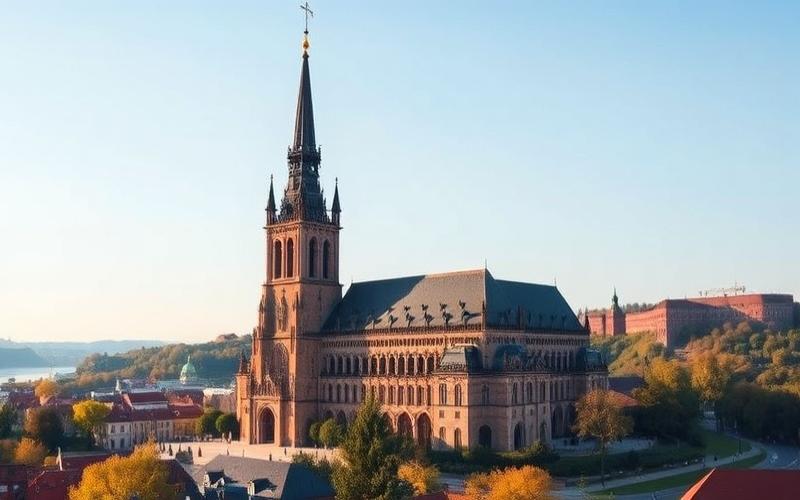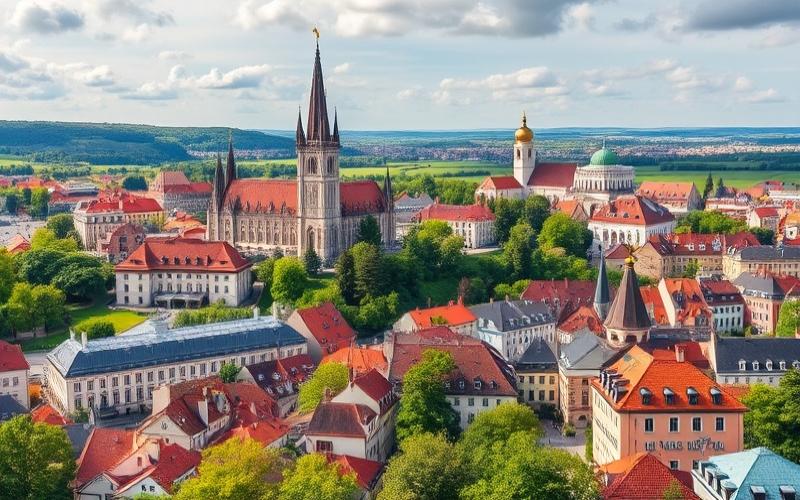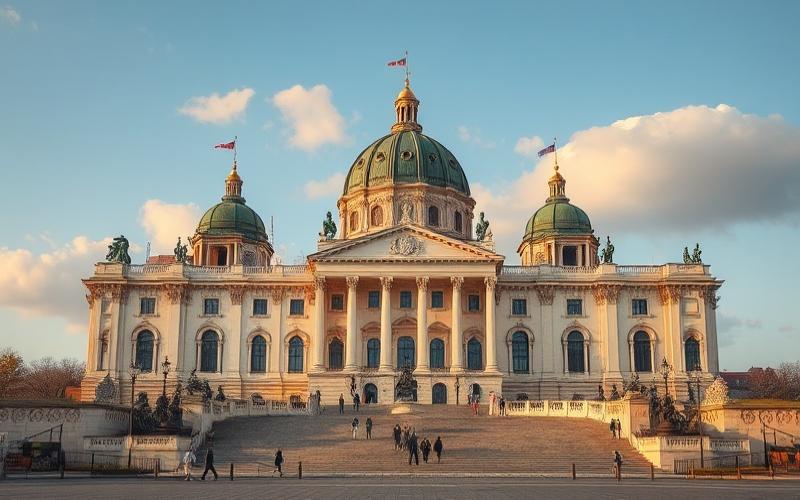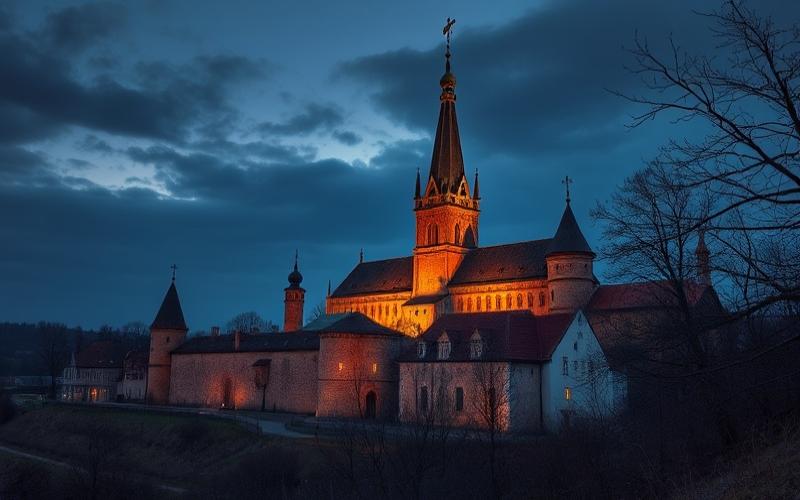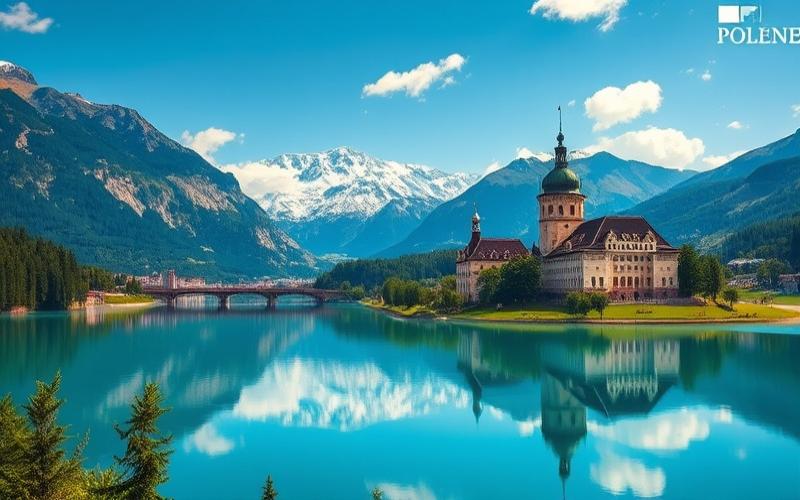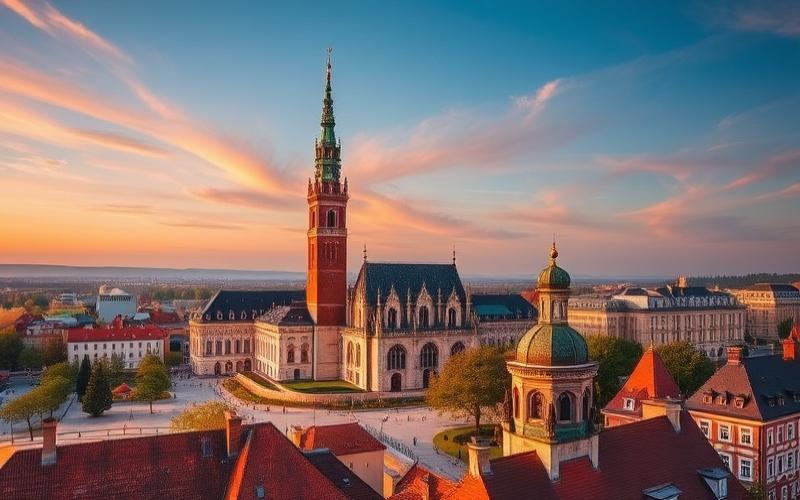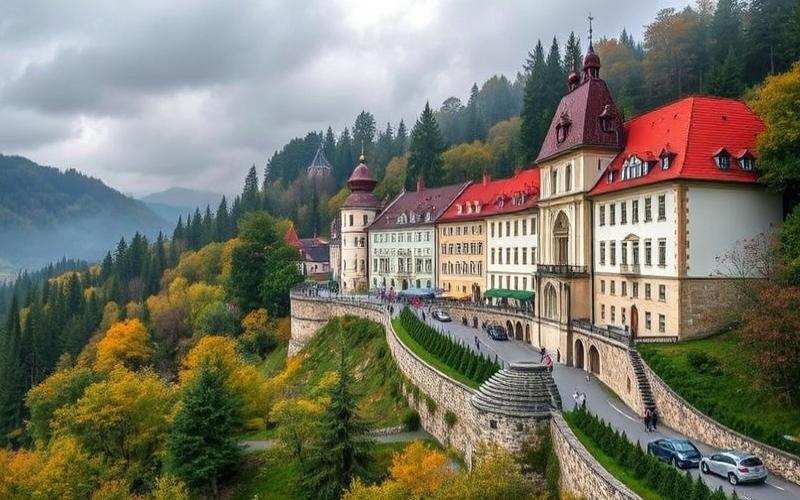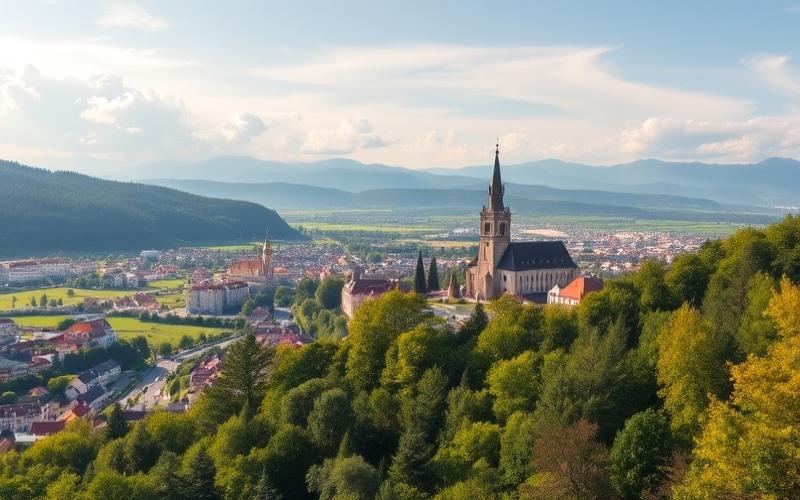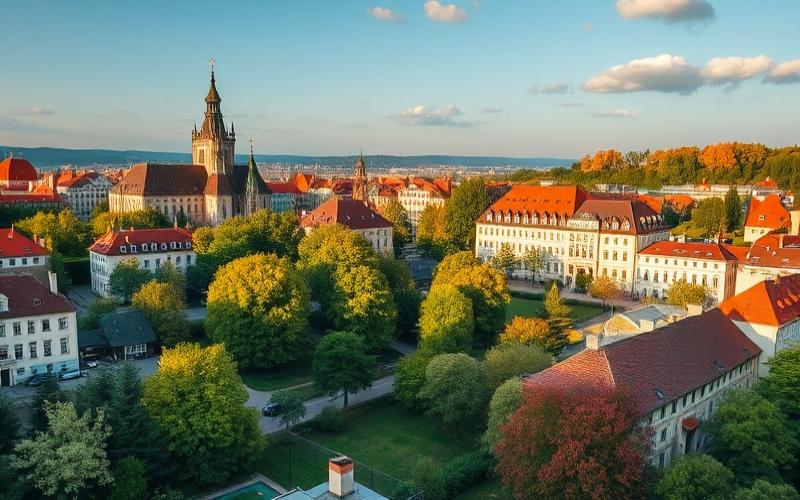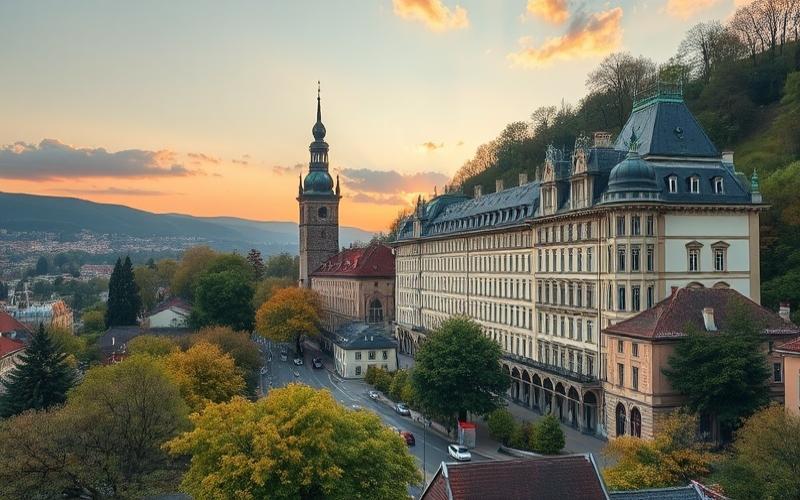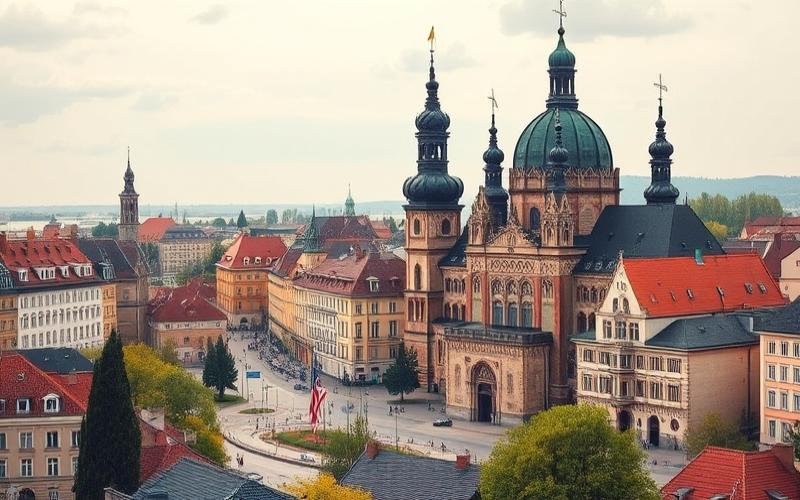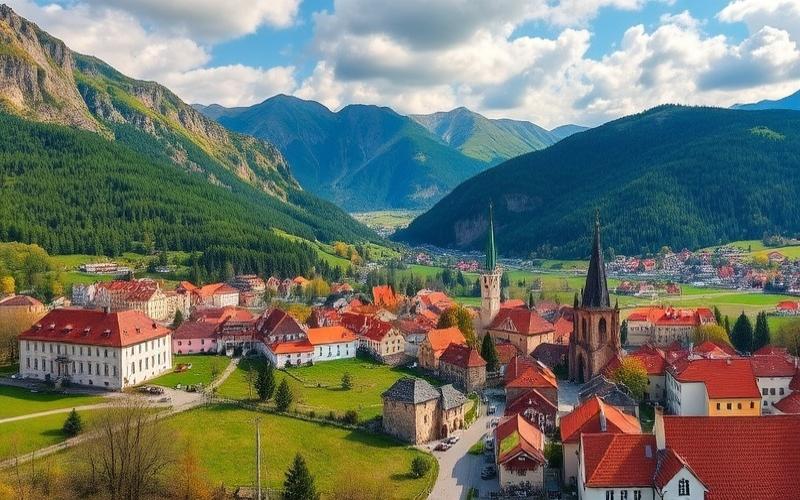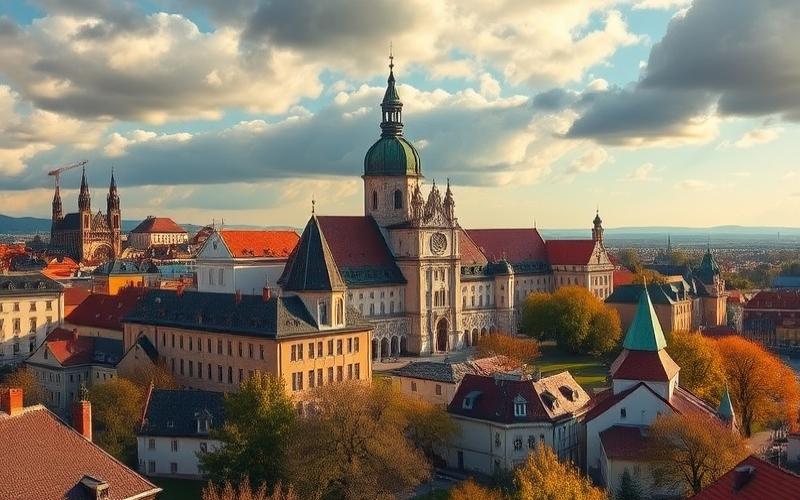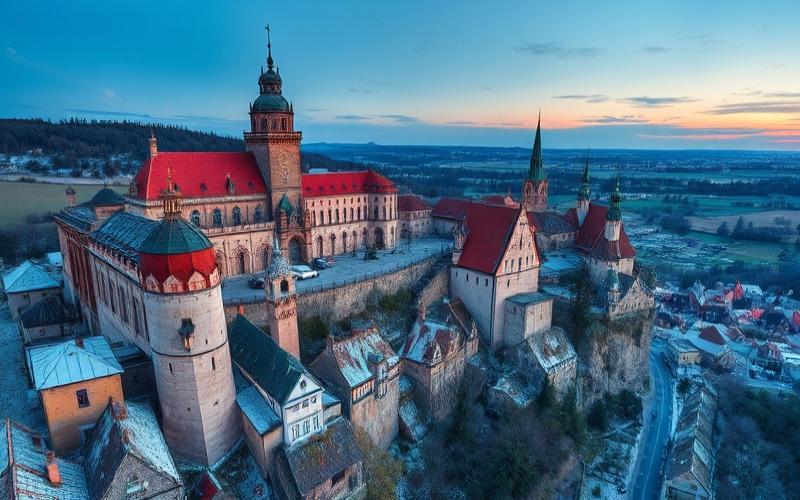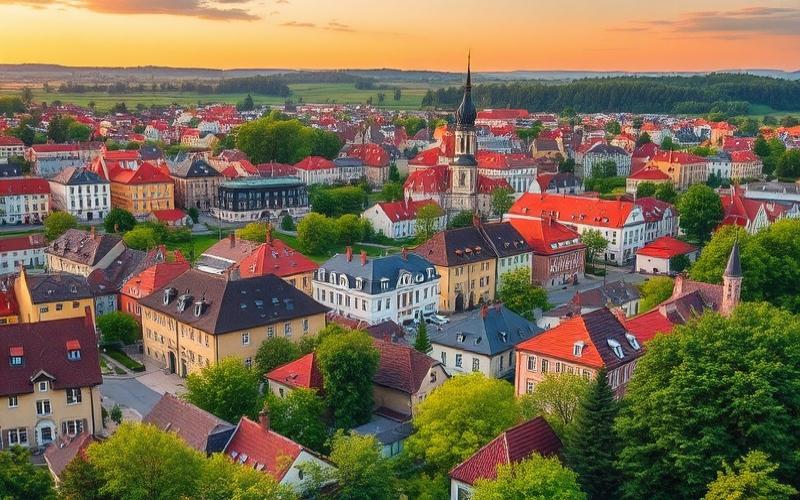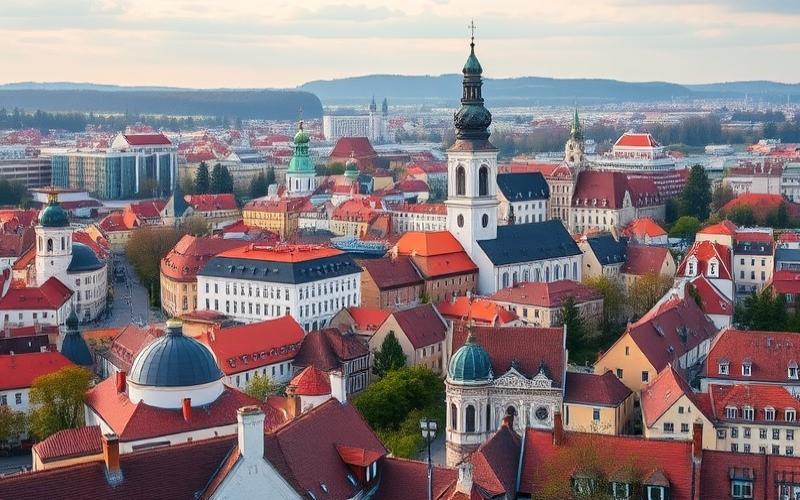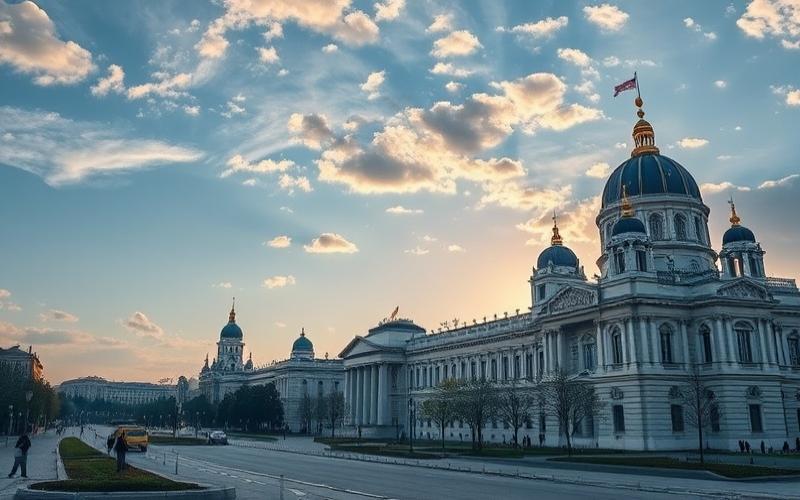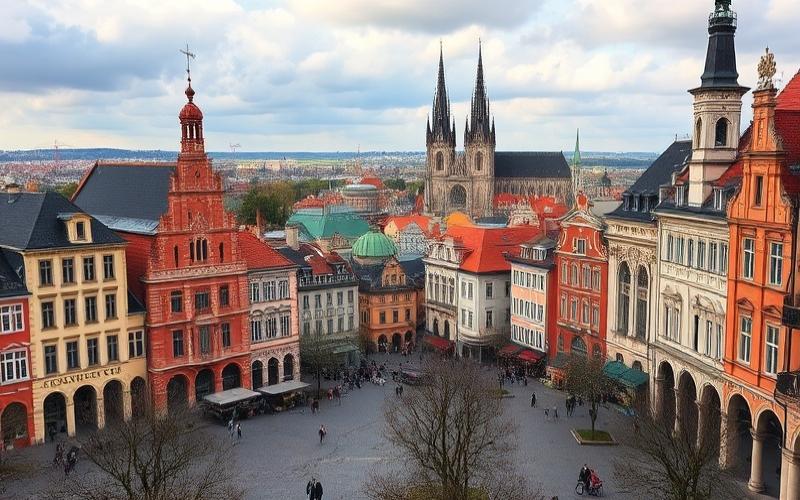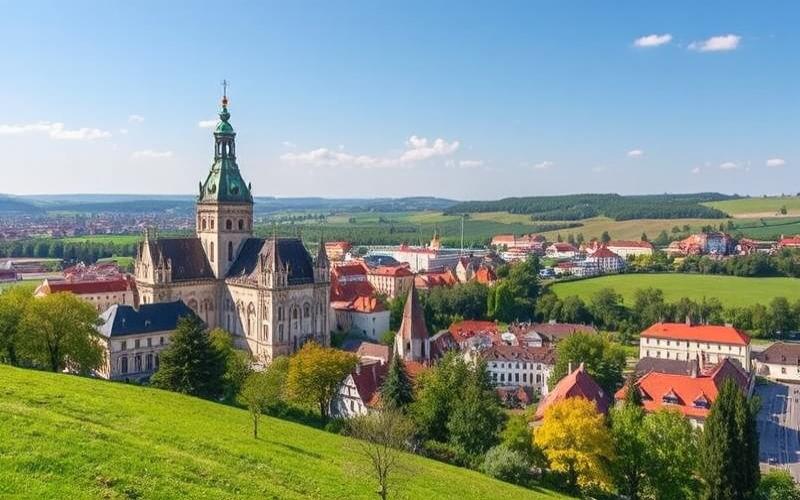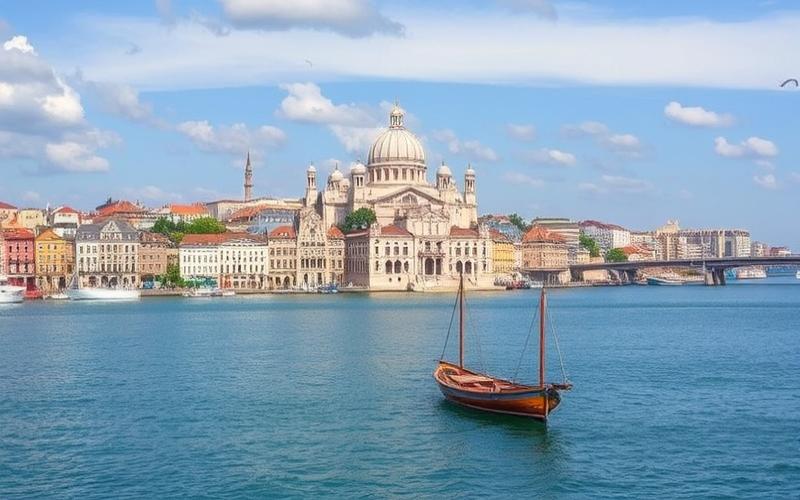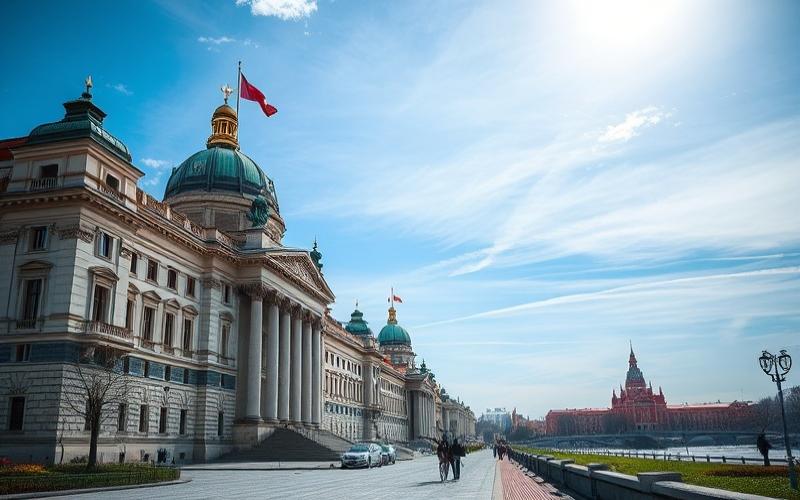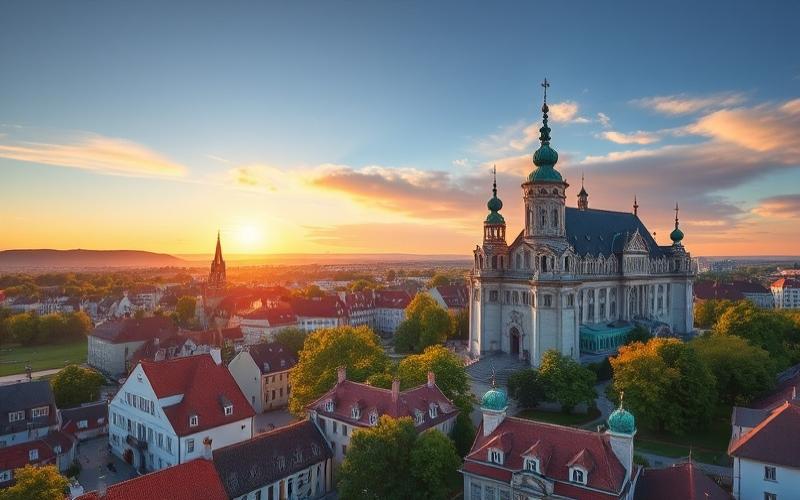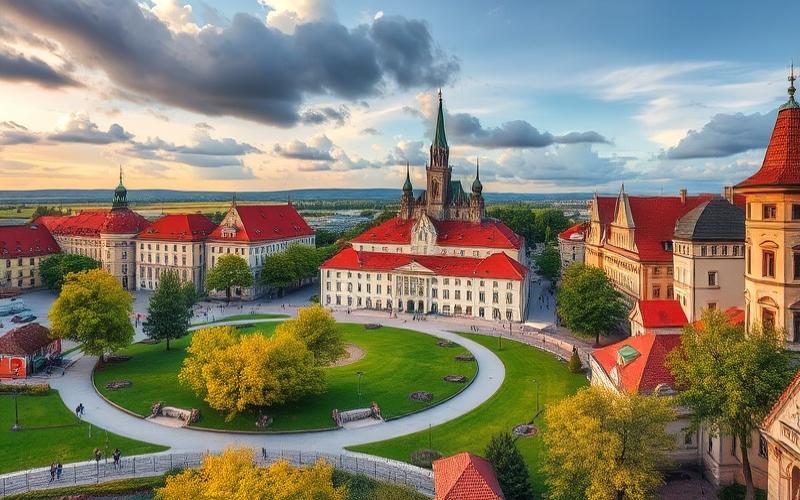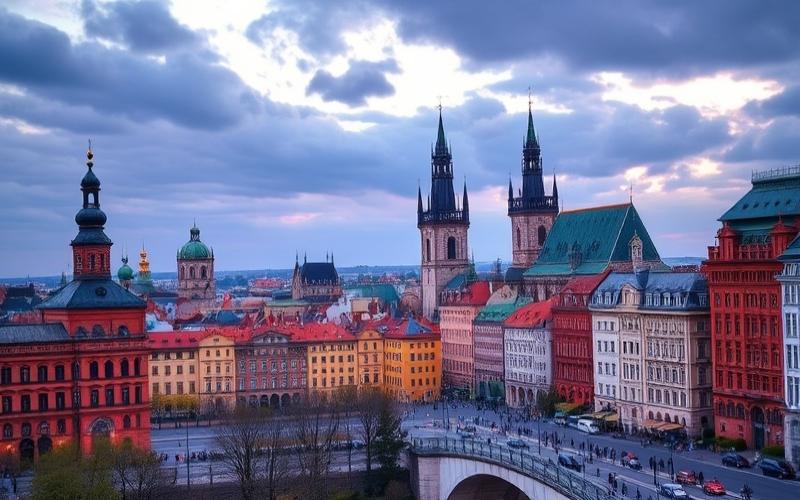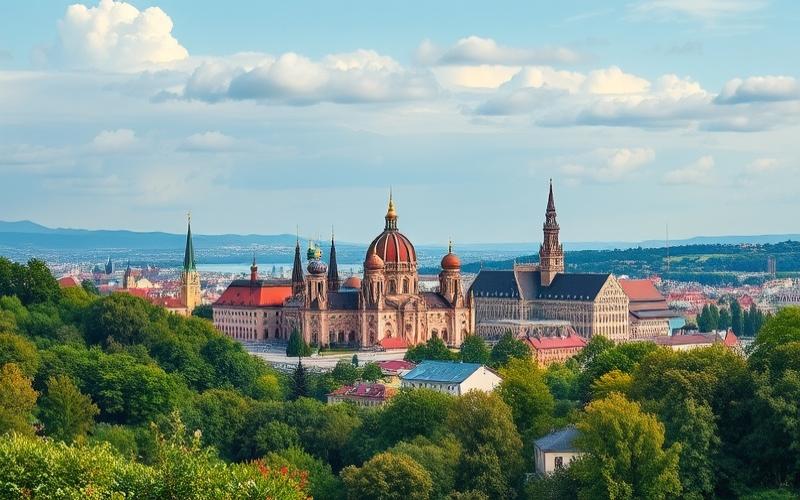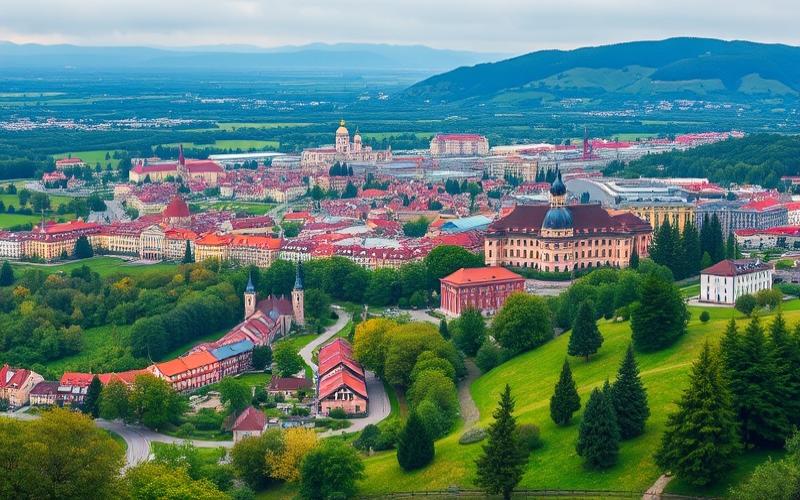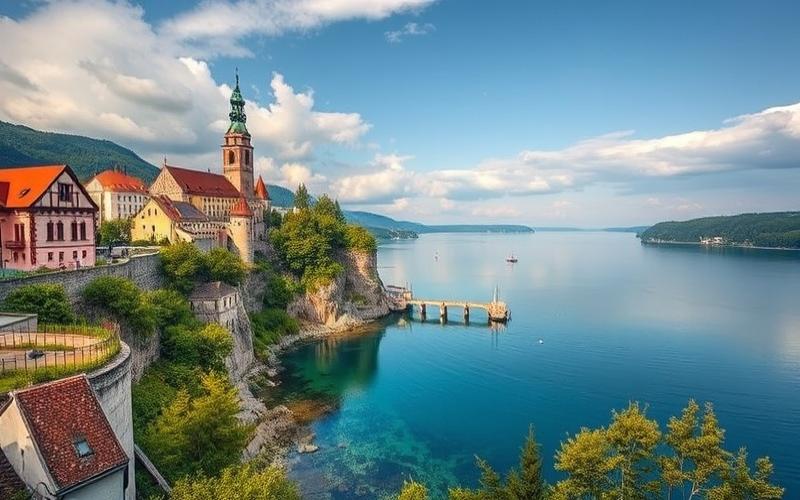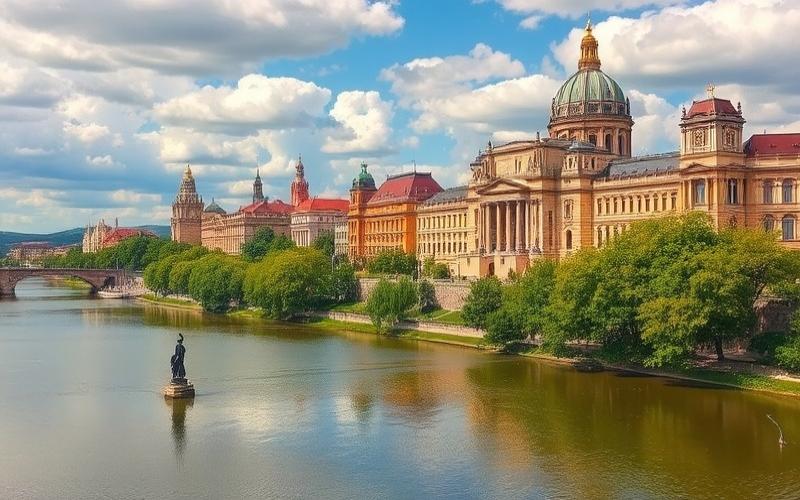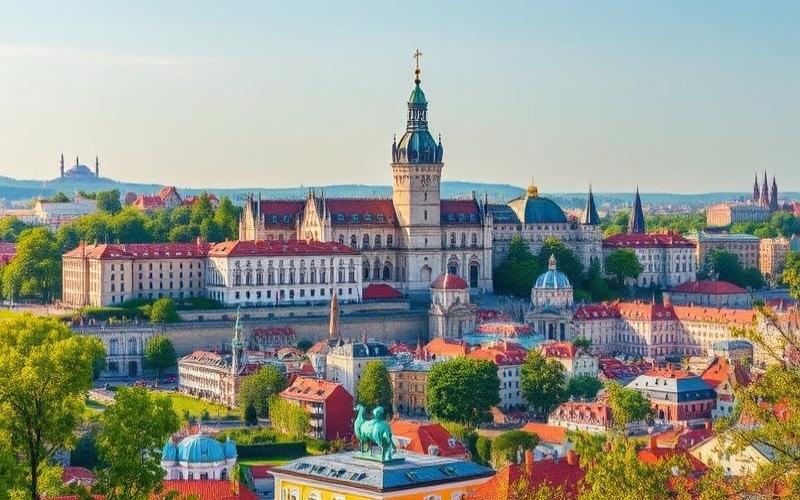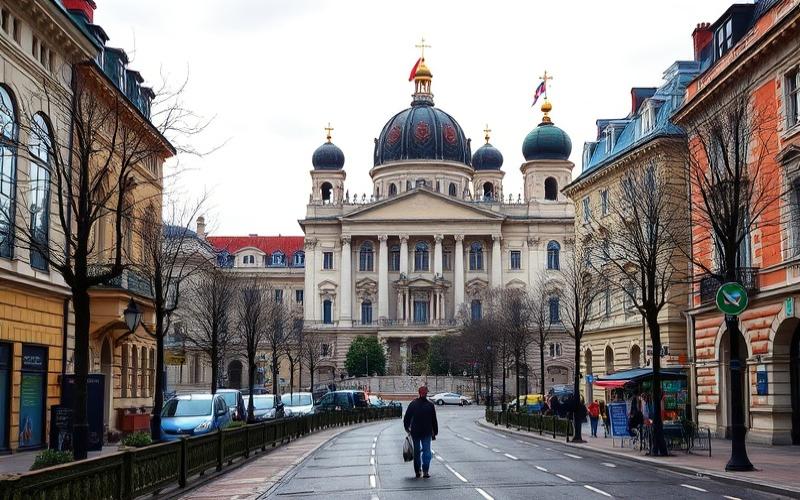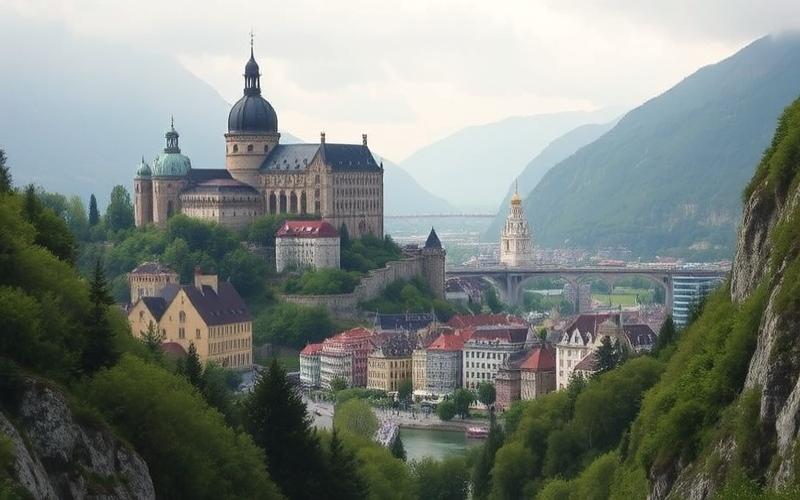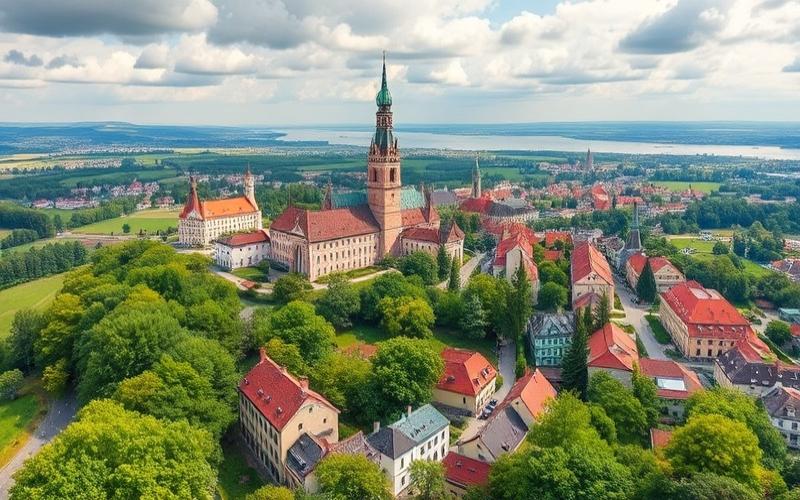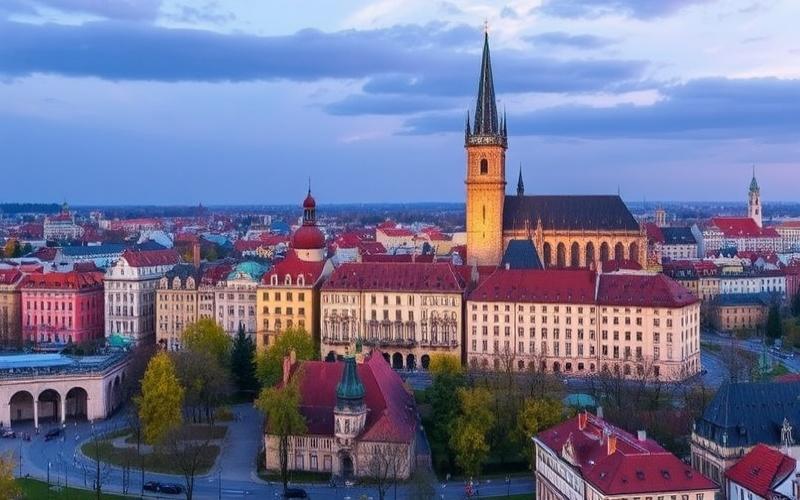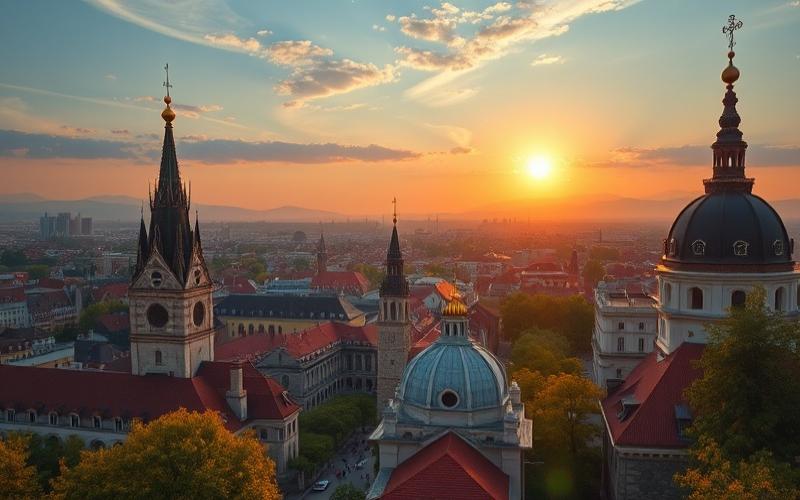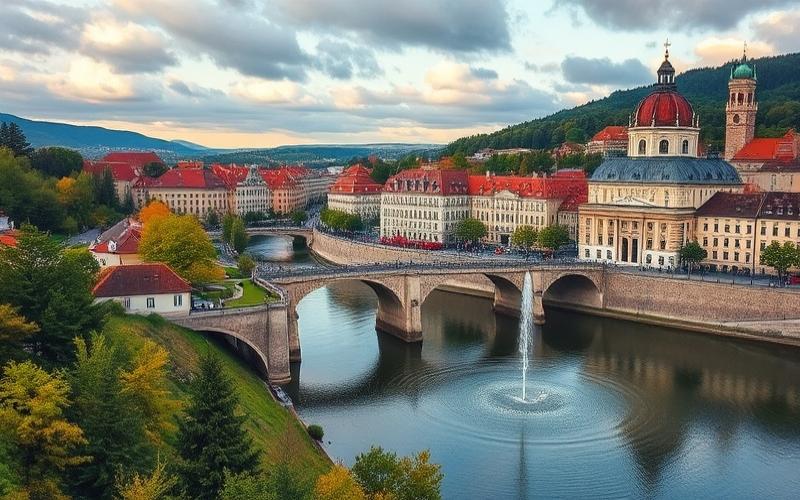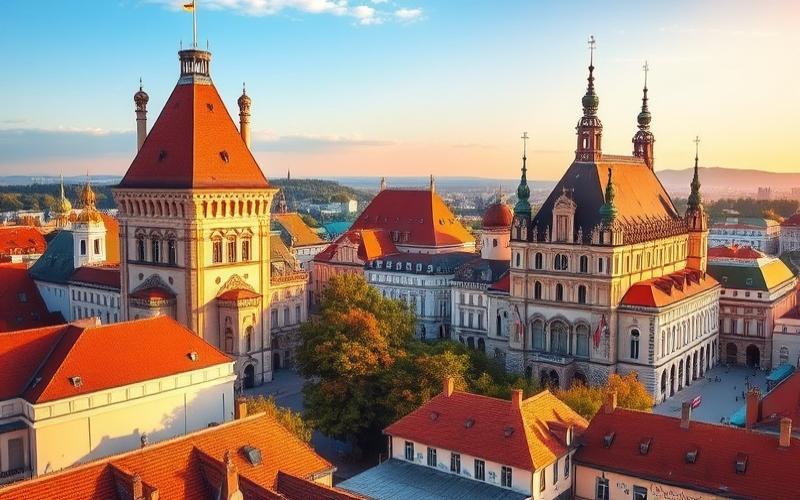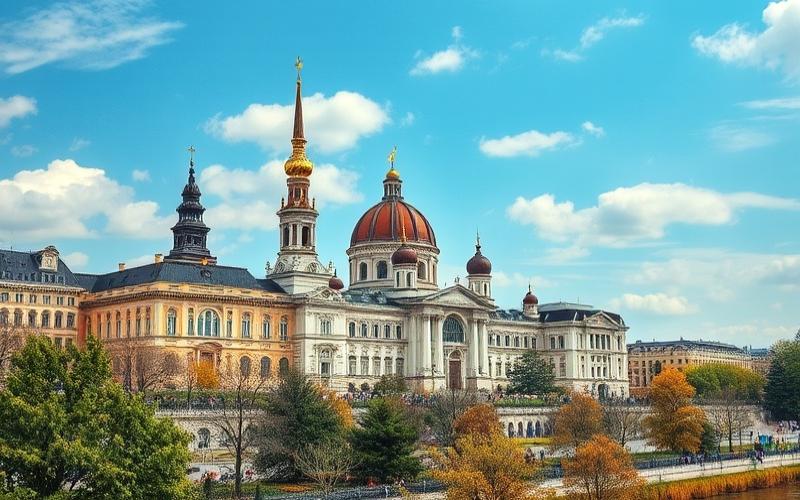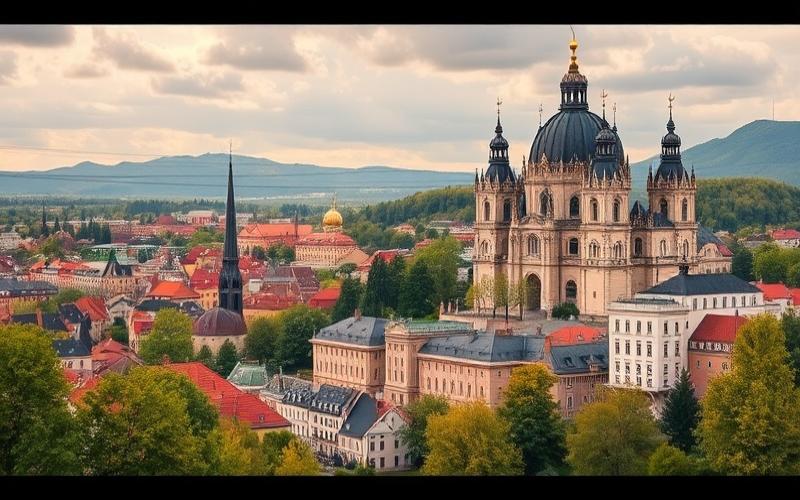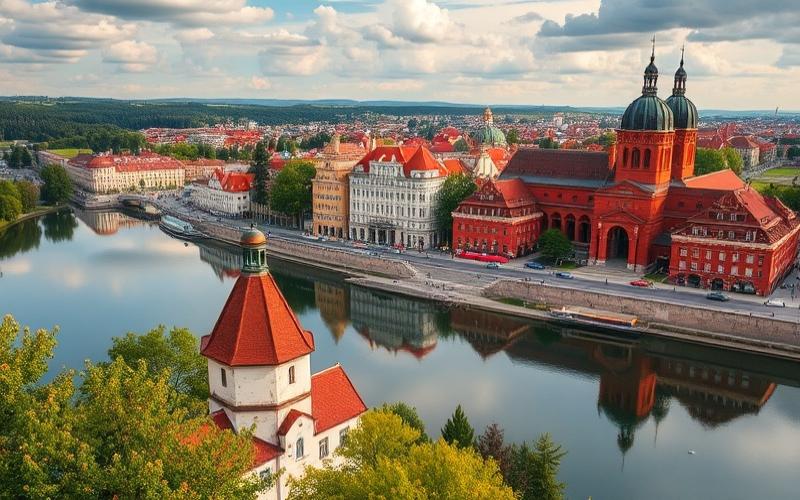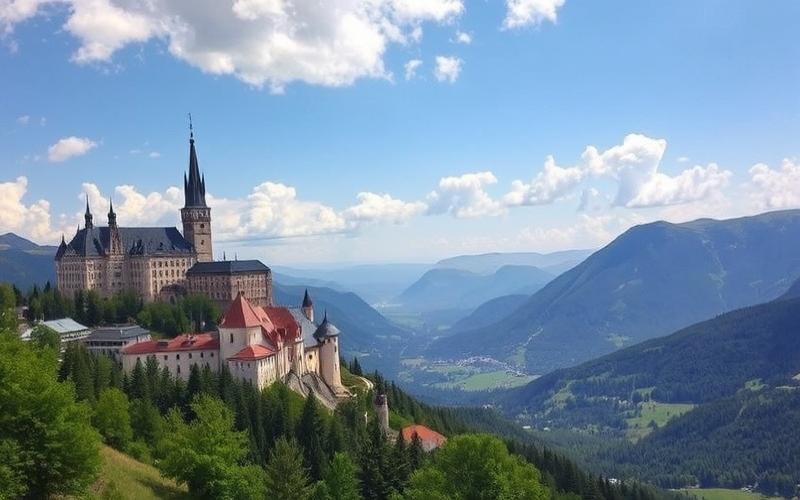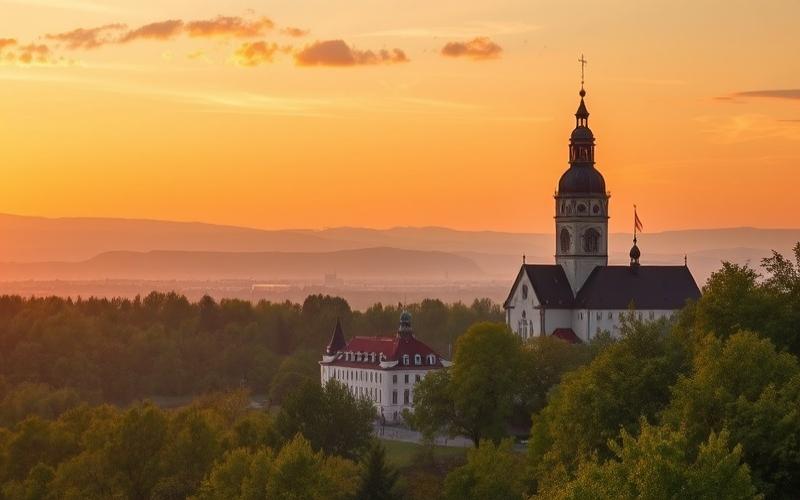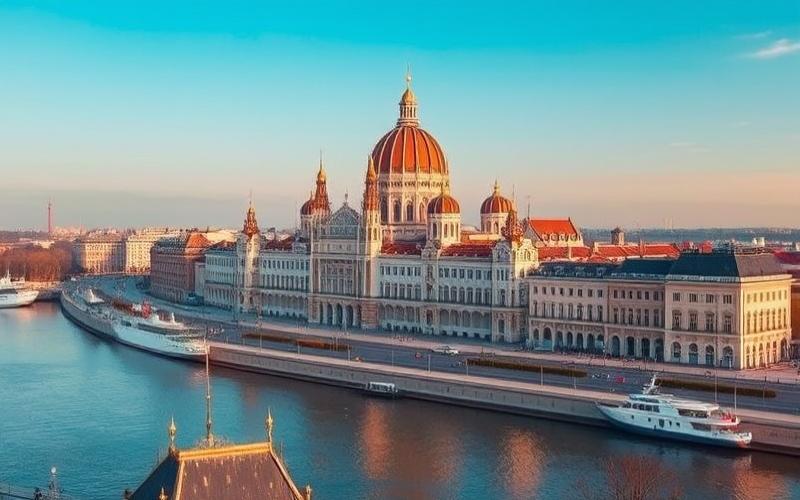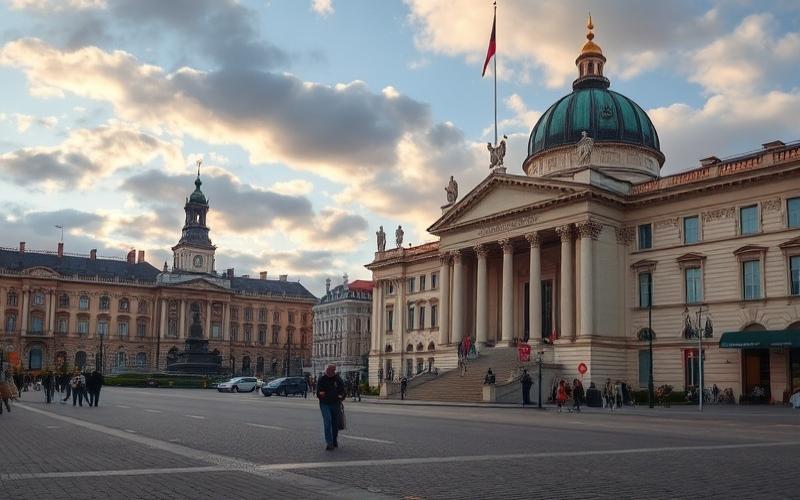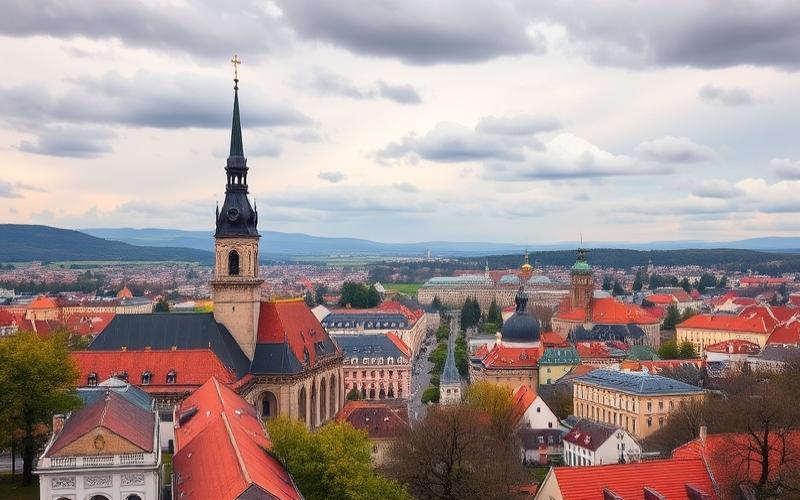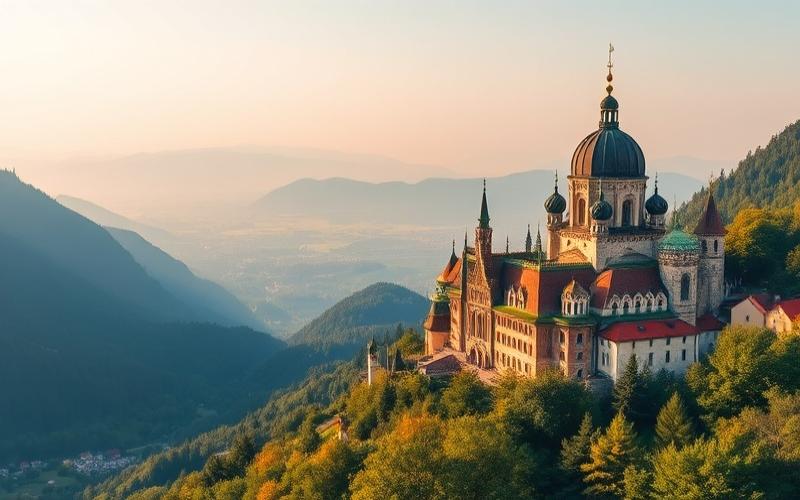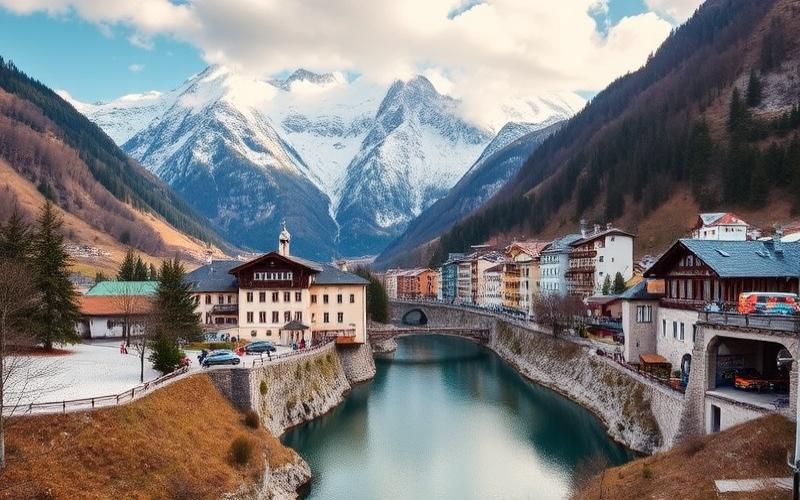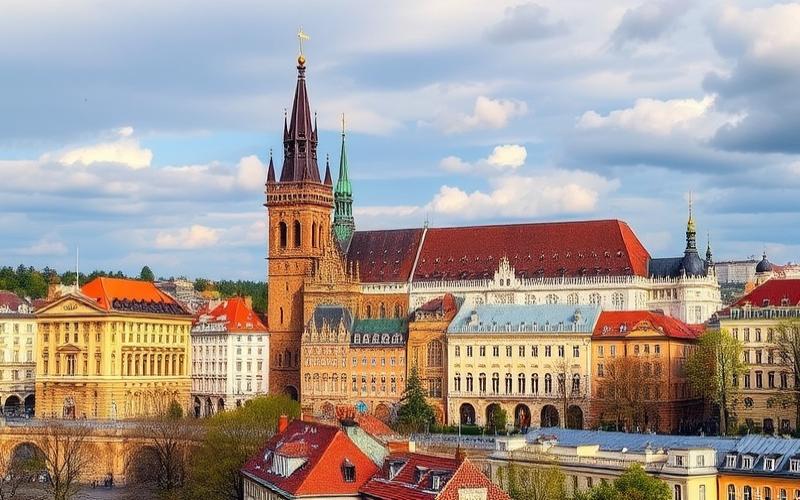
 Published on and written by Cyril Jarnias
Published on and written by Cyril Jarnias
Poland, with its cultural riches and picturesque landscapes, attracts a growing number of tourists each year, which exerts an increasing influence on its real estate market. As cities like Krakow and Gdansk become must-visit destinations, the demand for temporary housing continues to rise, pushing prices upward and altering the local economic structure.
This dynamic, while beneficial for some real estate investors, raises questions regarding housing accessibility for local residents and the environmental impact of this rapid expansion.
In this article, we will explore how tourism is transforming this key sector in Poland, analyzing the opportunities and challenges it presents.
Tourism in Poland: Upheaval in the Real Estate Market
The sustained increase in tourism in Poland has profoundly transformed the real estate market, particularly in major cities such as Warsaw and Krakow. The record growth of the tourism sector, which will reach an economic contribution of 165.5 billion Polish zlotys (39 billion euros) in 2025 and support over 901,100 jobs, has resulted in increased demand for housing suitable for domestic and international visitors.
Effects on Real Estate Demand and Prices
- The influx of tourists has intensified competition for housing access in sought-after urban centers.
- In Warsaw, the average price per square meter now exceeds 16,000 PLN; in Krakow, it surpasses 15,000 PLN.
- This price inflation is directly linked to the massive conversion of standard apartments into temporary tourist rentals via Airbnb or Booking.
| City | Average Price per m² (PLN) – 2025 |
|---|---|
| Warsaw | >16,000 |
| Krakow | >15,000 |
Rise of Short-Term Rentals
The growing use of platforms like Airbnb has altered the rental supply:
- Noticeable decrease in the number of available long-term rental properties.
- Widespread increase in traditional rents due to this scarcity.
- Rapid transformation of entire buildings dedicated to short stays.
Social and Economic Repercussions
Positive Impact:
- Generation of local jobs in hospitality, food service, and related services.
- Boost to local commerce through tourist spending (+10% compared to pre-pandemic levels).
Negative Effects:
- Increased pressure on local residents’ purchasing power; growing difficulties in securing long-term housing in certain central neighborhoods.
- Occasional instances of gentrification or residential depopulation.
New Construction and Urban Adaptation
In response to this pressure:
- Many real estate projects have been launched since 2023 to increase available supply – particularly in the form of apartments specifically designed for tourist or mixed residential/tourist rental.
Recent Key Statistics
Estimated Annual Number of Foreign Visitors (2024):
> ~21 million, with a marked upward trend over the past three years
New Housing Built in Urban Areas (Warsaw/Krakow) between January 2023 – June 2025:
> +12%, with a significant portion oriented towards the “short-term rental” segment
Regulatory Measures Adopted
To preserve social balance:
- Gradual introduction of quotas limiting the maximum number of tourist accommodations per building or central neighborhood;
- Strengthened tax controls on income from platforms like Airbnb;
- Municipal plans promoting targeted construction or renovation to specifically meet permanent residential needs;
- Increased awareness regarding neighborhood respect in highly touristic areas.
The rise in tourism thus places Poland among the European real estate markets where major economic opportunities coexist… but also social challenges requiring vigilant policy oversight.
Good to Know:
The increase in tourism in Poland, with approximately 19 million tourists in 2022, has led to strong demand for housing, particularly in major cities like Warsaw and Krakow. This demand has resulted in rising real estate prices and fueled the growth of short-term rentals on platforms like Airbnb, which, in turn, has affected the long-term rental market, reducing supply for permanent residents and increasing rents. In response, authorities have implemented regulations aimed at limiting the number of Airbnb licenses and encouraging the construction of new housing to balance the needs of tourists and residents. This dynamic has had positive repercussions on the local economy through increased investment, although social tensions may emerge due to rapid transformations in the urban landscape.
Tourist Areas: Hubs of Attraction for Investors
Tourist areas in Poland strongly attract real estate investors due to market dynamics, sustained tourism growth, and specific economic and tax benefits in these regions.
Factors Making Tourist Areas Attractive for Real Estate Investment:
- Rapid Tourism Growth: Cities like Krakow, Zakopane, or Gdańsk record a steady increase in the number of domestic and international visitors, significantly boosting seasonal and permanent rental demand.
- Rich Cultural and Natural Heritage: The preservation of unique architectural heritage (for example in Krakow) or proximity to major natural sites (Tatra Mountains around Zakopane) constitutes a powerful attraction driver for tourists — and thus for real estate investors.
- Local Economic Dynamism: The tourist influx stimulates regional economic development, thereby fostering the rise of modern infrastructure, local commerce, and employment.
Influence of Tourism on Real Estate Demand in These Regions:
- Tourism development increases the potential profitability of properties rented short-term (seasonal rentals like Airbnb) or long-term.
- Certain central neighborhoods see their prices rise faster than in the rest of the country due to this increased rental pressure.
| City/Region | Average Annual Number of Tourists | Recent Change (%) | Estimated Gross Rental Yield |
|---|---|---|---|
| Krakow | 14 million | +34% | >7% |
| Zakopane | 3 million | +10% | 6–8% |
| Gdańsk/Sopot/Gdynia | 5 million | +12% | ~6% |
Types of Properties Particularly Sought After by Investors:
- Apartments in historic city centers
- Studios or small apartments intended for short-term rental
- Secondary residences near natural attractions (Masurian Lakes, Tatra Mountains)
- Renovated older buildings offering strong heritage potential
Summary List:
- New residential properties adapted to international standards
- Furnished tourist rentals ready to lease
- Traditional houses converted into guesthouses
Associated Economic and Tax Benefits:
- Favorable taxation for non-residents thanks to double taxation treaties
- Attractive capital gains tax regime
- Protective legal framework for landlords
- Polish macroeconomic stability with sustained growth exceeding the European average
Concrete Example:
Krakow has benefited for several years from a growing influx of foreign investors. In 2024–2025, the gross yield regularly exceeds 7%, placing this city among the best European destinations according to several specialized rankings. For illustration:
- Average annual price increase in some historic districts: +34%
- Over 14 million annual visitors generating high hotel occupancy year-round
In the north, Gdańsk also attracts with its strategic position on the Baltic Sea; its highly frequented coastline boosts both hotel and high-end residential investment.
Key Takeaway
Polish tourist areas offer investors an attractive risk/return profile thanks to the dynamism of the local tourism sector, favorable regulation, and high liquidity linked to growing international interest in these markets.
Good to Know:
Tourist areas in Poland have become hubs of attraction for real estate investors due to tourism growth increasing demand for properties such as short-stay apartments and secondary residences. Cities like Krakow and Gdańsk, with an annual increase in visits of 10%, illustrate this dynamic, attracting investment thanks to strong rental return potential. Investors favor new or renovated properties that meet the high standards of international tourists. Furthermore, tax incentives such as tax reductions for local entrepreneurs and government subsidies for the renovation of historic buildings further enhance economic appeal. The example of Zakopane, where real estate investments climbed by 15% in 2022, demonstrates how tourism stimulates the local economy while offering lucrative return opportunities for savvy investors.
Rising Real Estate Prices: The Tourist Influence
The rise of tourism in Poland exerts significant pressure on real estate prices in major tourist destinations such as Warsaw, Krakow, and the Tatra region, which concentrate a large portion of the demand, both for purchase and short-term rental.
| City/Region | Average Price per m² (2025) | Recent Increase | Annual Number of Tourists (estimate) | Local Market Specifics |
| Warsaw | 15,000 PLN (~3,500 €) to 23,389 PLN (~5,434 €) | +12 to +18% over 3 years | >10 million | Strong rental demand, influx of foreign investors, high-end development |
| Krakow | 10,214 PLN (~2,370 €) to 14,000 PLN (~3,250 €) | +15% over 3 years | >14 million | International tourism, dynamic Airbnb rental market, pressure on residential sector |
| Tatras (Zakopane) | 12,000 PLN (~2,800 €) to 18,000 PLN (~4,200 €) | +20% over 4 years | >3 million | Highly lucrative seasonal rental, property scarcity, real estate speculation |
Factors of Tourist Influence on Real Estate Prices:
- Increased Demand for Short-Term Rentals:
The rise of Airbnb and similar platforms has transformed many city-center apartments (especially in Krakow and Warsaw) into tourist rentals, reducing supply for residents and contributing to rising rents and purchase prices. - Foreign Investments:
Poland’s growing attractiveness to foreign investors, particularly Europeans, has energized the market. In Warsaw, demand for prestige properties and rental yield attracts an international clientele, pushing prices to record levels. - Growing Popularity of the Destination:
The annual number of tourists continues to increase: Krakow and Warsaw are now among the most visited cities in Central Europe, generating constant demand for accommodation and justifying the increase in real estate prices and rents.
Price Evolution and Tension in the Rental Market:
- In Warsaw, the average price of an existing apartment exceeded 15,000 PLN/m² in 2025, an increase of over 15% in three years. The city-center market, highly sought after by rental investors, even shows prices reaching up to 23,389 PLN/m².
- In Krakow, prices follow the same trend with strong demand for properties near major tourist attractions and the historic center.
- In the Tatra region, real estate speculation is fueled by the high profitability of seasonal rentals, with prices per square meter having increased by 20% in four years.
Consequences for the Residential Sector:
- Rising Rents for Locals:
Students and young professionals, particularly in Krakow and Warsaw, struggle to find housing due to competition from short-term rentals. - Scarcity of Supply:
In Zakopane, in the Tatras, the majority of new apartments are immediately directed towards tourist rental, making supply scarce for permanent residents. - Risk of City Center Depopulation:
The conversion of housing into tourist accommodations fosters gentrification and alters the social structure of historic neighborhoods.
Example of Average Monthly Rents (2025):
| Type of Housing | Warsaw | Krakow | Zakopane/Tatras |
| Studio | 3,000 – 4,000 PLN | 2,300 – 3,500 PLN | 3,500 – 5,000 PLN |
| 2-Room Apartment | 3,500 – 5,000 PLN | 3,700 – 4,600 PLN | 5,000 – 7,500 PLN |
| 3-Room Apartment | 5,000 – 7,000 PLN | 4,600 – 6,000 PLN | 7,000 – 10,000 PLN |
Key Takeaway:
Poland’s tourism dynamism, combined with the profitability of short-term rentals and the influx of foreign investment, fuels a sustained rise in real estate prices in the most attractive regions, at the risk of widening housing access inequalities for the local population.
Important:
Price evolution can vary according to the fluctuation of the Polish zloty against the euro, and statistics are subject to rapid change in a tight market.
Good to Know:
Real estate prices in tourist regions of Poland, such as Krakow, Warsaw, and the Tatra region, have seen a notable increase, strongly influenced by the growing flow of tourists, exceeding 21 million annual visitors. In Krakow, for example, prices rose by 10% over the past year, fueled by increased demand for short-term rentals often used by tourists. This dynamic has also attracted foreign investment, increasing market pressure. In the Tatras, housing near ski slopes has become a preferred target for foreign investors, exacerbating tensions in the rental sector, making housing access more difficult for residents. This phenomenon has also propelled Poland to the ranks of favored European destinations, accentuating local imbalances between tourist demand and residential needs.
Rental Investment in Poland: Opportunities and Challenges
Rental investment in Poland presents attractive opportunities, particularly in cities with high tourist traffic, but it also involves challenges related to regulation, seasonality, and the rapid evolution of the market.
Most Promising Geographical Areas Thanks to Tourism:
| City | Average Resale Price Q1 2025 (PLN/m²) | Annual Change | Main Tourist Assets |
| Warsaw | 16,459 (~4,250 $) | +8.1 % | Capital, economic and cultural hub |
| Krakow | 15,099 (~3,900 $) | +10.6 % | UNESCO heritage, international tourism |
| Gdańsk | 12,279 (~3,170 $) | +0.3 % | Baltic Sea, popular seaside resort |
| Wrocław | 12,675 (~3,275 $) | +9.3 % | Dynamic university city |
These cities benefit from a significant influx of domestic and international tourists that stimulate demand for short-term rentals.
Current Trends in the Polish Real Estate Market:
- Real estate prices reached a historical record in early 2025 with a housing index at 213.20 points, almost double the level observed ten years earlier.
- Rental yield in major cities remains attractive despite a slight decrease in the pace of rent increases (+4.2% year-on-year in April 2025).
- Demand concentrates on:
- Studios/one or two-room apartments intended for short stays.
- Family apartments for summer tourism (particularly on the Baltic coast).
- Renovated or new properties, offering modern comfort sought by international travelers.
Concrete example:
In Krakow – a flagship destination for city breaks – the short-term rental supply continues to attract foreign investors seduced by high occupancy rates throughout the cultural and academic year.
Key Opportunities for Investors:
- Structural price increase (+6–10% depending on the city between Q1 2024 and Q1 2025).
- Strong tourist attractiveness ensuring regular demand.
- Overall economic dynamism (GDP growth estimated around +3.2% in Q1 2025) favoring local employment and thus rental solvency.
Strengths
- Continuous growth of the tourism sector
- Possible regional diversification (Baltic coast vs. historic centers)
- Significant upside potential outside Warsaw
Major Challenges Faced by Investors:
Regulation
Increasing regulation of short-term rentals in some municipalities (annual quotas/technical standards/registration obligation).
Seasonality
Marked fluctuations in some seaside or mountain areas where occupancy rates can drop outside the summer/winter season.
Increased Competitiveness
Massive arrival of new players in recent years; high stock of unsold apartments in early 2025 (approximately 16,070 new units available, about 10% of annual production).
Summary List of Risks:
- Potential temporary drop in profitability during off-peak periods
- Necessary adaptation to new local standards
- Competitive pressure in certain saturated urban segments
In summary: investing in Polish rental real estate remains promising if one judiciously targets dynamic tourist areas while anticipating professional management in the face of regulatory constraints and seasonal cycles.
Good to Know:
Rental investment in Poland offers numerous opportunities, particularly in major cities like Krakow and Warsaw, which fully benefit from the tourist influx. In 2022, the real estate market experienced strong demand for city-center apartments, prized for short-term rentals, thanks to the millions of tourists attracted by Poland’s rich cultural heritage. However, investors must be attentive to challenges such as seasonal fluctuations in demand and strict regulations governing short-term rentals. For example, recent laws have limited Airbnb rentals, which could affect potential returns. Faced with increasing competition, it is crucial to thoroughly study the local market and target properties offering unique attractions or an interesting value for money to maximize return on investment.
Disclaimer: The information provided on this website is for informational purposes only and does not constitute financial, legal, or professional advice. We encourage you to consult qualified experts before making any investment, real estate, or expatriation decisions. Although we strive to maintain up-to-date and accurate information, we do not guarantee the completeness, accuracy, or timeliness of the proposed content. As investment and expatriation involve risks, we disclaim any liability for potential losses or damages arising from the use of this site. Your use of this site confirms your acceptance of these terms and your understanding of the associated risks.

